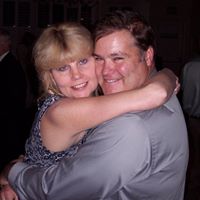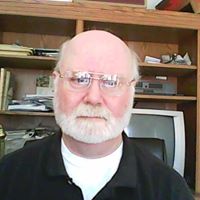Kenneth Leonard Griggs
age ~62
from Memphis, TN
- Also known as:
-
- Kenneth L Griggs
- Kenneth G Riggs
Kenneth Griggs Phones & Addresses
- Memphis, TN
- Alpharetta, GA
- Holly Springs, MS
- Moscow, TN
Us Patents
-
Transcript Alignment
view source -
US Patent:7487086, Feb 3, 2009
-
Filed:Jun 5, 2007
-
Appl. No.:11/758242
-
Inventors:Kenneth King Griggs - Roswell GA, US
-
Assignee:Nexidia Inc. - Atlanta GA
-
International Classification:G10L 15/26
G06F 7/20 -
US Classification:704235, 704270, 707 7
-
Abstract:An approach to alignment of transcripts with recorded audio is tolerant of moderate transcript inaccuracies, untranscribed speech, and significant non-speech noise. In one aspect, a number of search terms are formed from the transcript such that each search term is associated with a location within the transcript. Possible locations of the search terms are then determined in the audio recording. The audio recording and the transcript are then aligned using the possible locations of the search terms. In another aspect a search expression is accepted, and then a search is performed for spoken occurrences of the search expression in an audio recording. This search includes searching for text occurrences of the search expression in a text transcript of the audio recording, and searching for spoken occurrences of the search expression in the audio recording.
-
Multiresolution Searching
view source -
US Patent:7949527, May 24, 2011
-
Filed:Dec 19, 2007
-
Appl. No.:11/959716
-
Inventors:Jon A. Arrowood - Smyrna GA, US
Robert W. Morris - Atlanta GA, US
Kenneth K. Griggs - Roswell GA, US -
Assignee:Nexidia, Inc. - Atlanta GA
-
International Classification:G10L 15/04
-
US Classification:704254, 704257, 704 7
-
Abstract:This invention relates to processing of audio files, and more specifically, to an improved technique of searching audio. More particularly, a method and system for processing audio using a multi-stage searching process is disclosed.
-
Transcript Alignment
view source -
US Patent:20090119101, May 7, 2009
-
Filed:Jan 12, 2009
-
Appl. No.:12/351991
-
Inventors:Kenneth King Griggs - Roswell GA, US
-
Assignee:Nexidia, Inc. - Atlanta GA
-
International Classification:G10L 15/26
-
US Classification:704235, 704E15043
-
Abstract:An approach to alignment of transcripts with recorded audio is tolerant of moderate transcript inaccuracies, untranscribed speech, and significant non-speech noise. In one aspect, a number of search terms are formed from the transcript such that each search term is associated with a location within the transcript. Possible locations of the search terms are then determined in the audio recording. The audio recording and the transcript are then aligned using the possible locations of the search terms. In another aspect a search expression is accepted, and then a search is performed for spoken occurrences of the search expression in an audio recording. This search includes searching for text occurrences of the search expression in a text transcript of the audio recording, and searching for spoken occurrences of the search expression in the audio recording.
-
Word Spotting False Alarm Phrases
view source -
US Patent:20100217596, Aug 26, 2010
-
Filed:Feb 24, 2009
-
Appl. No.:12/391395
-
Inventors:Robert W. Morris - Atlanta GA, US
Jon A. Arrowood - Smyrna GA, US
Mark A. Clements - Lilburn GA, US
Kenneth King Griggs - Roswell GA, US
Peter S. Cardillo - Atlanta GA, US
Marsal Gavalda - Sandy Springs GA, US -
Assignee:Nexidia Inc. - Atlanta GA
-
International Classification:G10L 15/04
G06F 17/30 -
US Classification:704251, 707E17039, 704E15001
-
Abstract:In one aspect, a method for processing media includes accepting a query. One or more language patterns are identified that are similar to the query. A putative instance of the query is located in the media. The putative instance is associated with a corresponding location in the media. The media in a vicinity of the putative instance is compared to the identified language patterns and data characterizing the putative instance of the query is provided according to the comparing of the media to the language patterns, for example, as a score for the putative instance that is determined according to the comparing of the media to the language patterns.
-
Transcript Alignment
view source -
US Patent:20100332225, Dec 30, 2010
-
Filed:Jun 29, 2009
-
Appl. No.:12/493786
-
Inventors:Jon A. Arrowood - Smyrna GA, US
Kenneth King Griggs - Roswell GA, US
Marsal Gavalda - Sandy Springs GA, US
Robert W. Morris - Atlanta GA, US -
Assignee:Nexidia Inc. - Atlanta GA
-
International Classification:G10L 15/26
G06F 17/30 -
US Classification:704235, 704E15043, 707759, 707769, 707705, 707802
-
Abstract:Some general aspects relate to systems and methods for media processing. One aspect, for example, relates to a method for aligning multimedia recording with a transcript. A group of search terms are formed from the transcript, with each search term being associated with a location within the transcript. Putative locations of the search terms are determined in a time interval of the multimedia recording. For each search term, zero or more putative locations are determined and, for at least some of the search terms, multiple putative locations are determined in the time interval of the multimedia recording. According to a first sequencing constraint, a first representation of a group of sequences each of a subset of the putative locations of the search terms is formed. A second representation of a group of sequences each of a subset of the search terms is formed. Using the first and the second representations, the time interval of the multimedia recording is partially aligned with the transcript.
-
Speech Recognition
view source -
US Patent:20110125499, May 26, 2011
-
Filed:Nov 24, 2009
-
Appl. No.:12/624882
-
Inventors:Kenneth King Griggs - Roswell GA, US
Jon A. Arrowood - Smyrna GA, US -
Assignee:Nexidia Inc. - Atlanta GA
-
International Classification:G10L 15/00
-
US Classification:704251, 704E15001
-
Abstract:Systems, methods, and apparatus, including computer program products for accepting a predetermined vocabulary-dependent characterization of a set of audio signals, the predetermined characterization including an identification of putative occurrences of each of a plurality of vocabulary items in the set of audio signals, the plurality of vocabulary items included in the vocabulary; accepting a new vocabulary item not included in the vocabulary; accepting putative occurrences of the new vocabulary item in the set of audio signals; and generating, by an analysis engine of a speech processing system, an augmented characterization of the set of audio signals based on the identified putative occurrences of the new vocabulary item.
-
Transcript Re-Sync
view source -
US Patent:20130060572, Mar 7, 2013
-
Filed:Sep 4, 2012
-
Appl. No.:13/602991
-
Inventors:Jacob B. Garland - Marietta GA, US
Drew Lanham - Menlo Park CA, US
Daryl Kip Watters - Marietta GA, US
Marsal Gavalda - Sandy Springs GA, US
Mark Finlay - Tucker GA, US
Kenneth K. Griggs - Roswell GA, US -
Assignee:Nexidia Inc. - Atlanta GA
-
International Classification:G10L 15/04
-
US Classification:704254, 704251, 704E15005
-
Abstract:In an aspect, in general, method for aligning an audio recording and a transcript includes receiving a transcript including a plurality of terms, each term of the plurality of terms associated with a time location within a different version of the audio recording, forming a plurality of search terms from the terms of the transcript, determining possible time locations of the search terms in the audio recording, determining a correspondence between time locations within the different version of the audio recording associated with the search terms and the possible time locations of the search terms in the audio recording, and aligning the audio recording and the transcript including updating the time location associated with terms of the transcript based on the determined correspondence.
-
Transcript Alignment
view source -
US Patent:7231351, Jun 12, 2007
-
Filed:Mar 7, 2003
-
Appl. No.:10/384273
-
Inventors:Kenneth King Griggs - Roswell GA, US
-
Assignee:Nexidia, Inc. - Atlanta GA
-
International Classification:G10L 15/08
G10L 15/00 -
US Classification:704251, 704257, 704243
-
Abstract:An approach to alignment of transcripts with recorded audio is tolerant of moderate transcript inaccuracies, untranscribed speech, and significant non-speech noise. In one aspect, a number of search terms are formed from the transcript such that each search term is associated with a location within the transcript. Possible locations of the search terms are then determined in the audio recording. The audio recording and the transcript are then aligned using the possible locations of the search terms. In another aspect a search expression is accepted, and then a search is performed for spoken occurrences of the search expression in an audio recording. This search includes searching for text occurrences of the search expression in a text transcript of the audio recording, and searching for spoken occurrences of the search expression in the audio recording.
Name / Title
Company / Classification
Phones & Addresses
Principal
Screen On The Green
Business Services at Non-Commercial Site
Business Services at Non-Commercial Site
730 Locust St, Bolivar, TN 38008
Resumes

Kenneth Griggs
view sourceLocation:
112 Belmont Dr, Alpharetta, GA 30022

Chief Operations Officer
view sourceLocation:
Memphis, TN
Industry:
Health, Wellness And Fitness
Work:
Kat Productions
Chief Operations Officer
Chief Operations Officer
Education:
Grambling State University 1982 - 1987
Bolivar Central High School 1979 - 1982
Bolivar Central High School 1979 - 1982
Skills:
Marketing Strategy
Social Networking
Marketing
Marketing Communications
Event Management
Direct Marketing
Event Planning
Advertising
Social Networking
Marketing
Marketing Communications
Event Management
Direct Marketing
Event Planning
Advertising
Interests:
Social Networking Events
Organizing Business Networking Events
Outdoor Activities and Charities Events
Sporting Events
Organizing Business Networking Events
Outdoor Activities and Charities Events
Sporting Events

Kenneth Griggs
view source
Kenneth Griggs
view source
Kenneth Griggs
view source
Kenneth Griggs
view source
Kenneth Griggs
view source
Kenneth Griggs
view sourceMedicine Doctors

Kenneth Griggs
view sourceSpecialties:
Diagnostic Radiology
Work:
Southeastern Radiology
209 W 27 St, Lumberton, NC 28358
9107388222 (phone), 9107398175 (fax)
209 W 27 St, Lumberton, NC 28358
9107388222 (phone), 9107398175 (fax)
Education:
Medical School
Uniformed Services University of the Health Sciences Hebert School of Medicine
Graduated: 1994
Uniformed Services University of the Health Sciences Hebert School of Medicine
Graduated: 1994
Languages:
English
Spanish
Spanish
Description:
Dr. Griggs graduated from the Uniformed Services University of the Health Sciences Hebert School of Medicine in 1994. He works in Lumberton, NC and specializes in Diagnostic Radiology. Dr. Griggs is affiliated with Southeastern Regional Medical Center.

Kenneth Alan Griggs
view sourceSpecialties:
Radiology
Diagnostic Radiology
Pediatric Pulmonology
Diagnostic Radiology
Pediatric Pulmonology
Education:
Uniformed Services University (1994)
Googleplus

Kenneth Griggs

Kenneth Griggs

Kenneth Griggs

Kenneth Griggs
Youtube
Myspace
Flickr
Classmates

Kenneth Griggs
view sourceSchools:
Fayette-Ware High School Somerville TN 1978-1982
Community:
Sherry Patterson, Helen Williams, Brenda Benson, Tonya Harrell

Kenneth Griggs
view sourceSchools:
Eldorado High School El Dorado CA 1964-1968

Kenneth Griggs
view sourceSchools:
Liberty Elementary School White Settlement TX 1980-1986, Brewer Middle School White Settlement TX 1986-1988, Ore City Junior High School Ore City TX 1988-1989
Community:
Robert Gunnells, Sheri Booker, Martha Mcdaniel

Kenneth Griggs
view sourceSchools:
O'Keefe High School Atlanta GA 1969-1973
Community:
Eddie Butler

ken griggs, Independence ...
view source
Ore City Junior High Scho...
view sourceGraduates:
Amber Shaffer (1985-1988),
Mark Crutcher (1996-1998),
Kenneth Griggs (1988-1989),
Pam Duffey (1966-1969),
Nathan Gray (1973-1981)
Mark Crutcher (1996-1998),
Kenneth Griggs (1988-1989),
Pam Duffey (1966-1969),
Nathan Gray (1973-1981)

Fayette-Ware High School,...
view sourceGraduates:
L C Hayslett (1956-1960),
Clarence Bandy (1971-1975),
Tommie Parham (1964-1968),
Kenneth Griggs (1978-1982)
Clarence Bandy (1971-1975),
Tommie Parham (1964-1968),
Kenneth Griggs (1978-1982)

Kenneth Griggs
view source
Kenneth Griggs
view source
Kenneth Griggs
view source
Kenneth Griggs
view source
Kenneth Griggs
view source
Kenneth Griggs
view source
Kenneth Griggs
view source
Kenneth Griggs
view sourceGet Report for Kenneth Leonard Griggs from Memphis, TN, age ~62


















